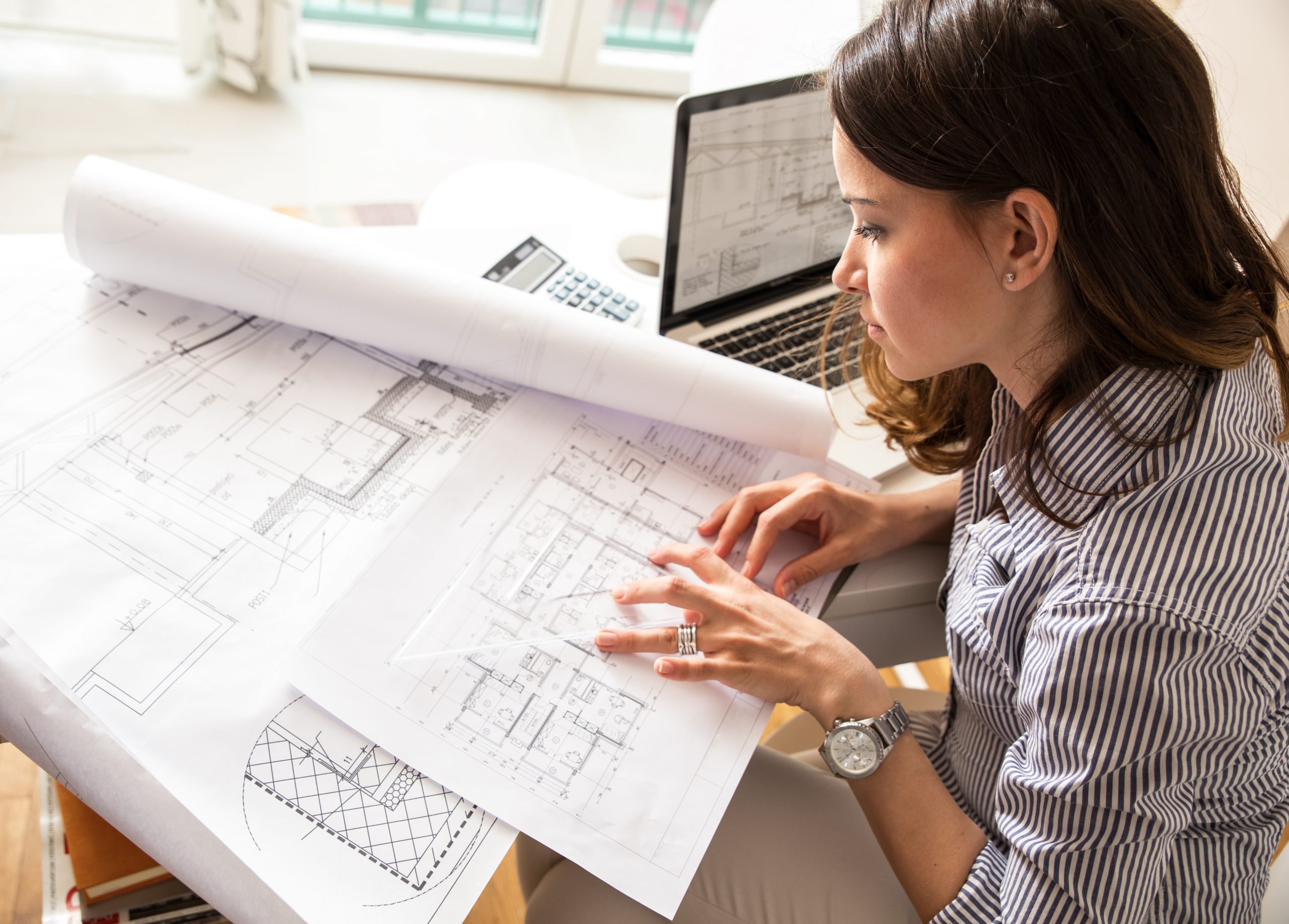Architect Marketing Strategies to Attract High-End Clients
Architect Marketing Strategies to Attract High-End Clients
Blog Article
Comprehending the Diverse Occupation Paths Available for Aspiring Architect
As an aspiring Architect, you have a globe of occupation courses waiting for you. Whether you're drawn to conventional architecture or the nuances of lasting layout, there's a particular niche that aligns with your passions.
Typical Style: Designing Buildings and Structures
Conventional style focuses on creating structures and structures that mix capability with aesthetic charm. Your designs can show social heritage, showcasing local customs while fulfilling modern requirements.
You'll develop skills in preparing, model-making, and website analysis, enabling you to envision and connect your ideas successfully. Involving with clients, you'll need to recognize their vision and convert it into possible layouts.
In addition, building codes and sustainability methods are important in your work, guaranteeing your frameworks are eco friendly and safe. As you grow in your job, you'll find chances in residential, commercial, and even reconstruction projects, each offering unique challenges. Embracing traditional style leads the way for a meeting career that admires the past while forming the future.
Urban Preparation: Forming Areas and Public Spaces
As an ambitious Architect, you can play an essential role as an urban organizer, changing exactly how neighborhoods work and engage. By using neighborhood interaction methods, you'll ensure that locals have a voice in shaping their setting. And also, integrating sustainable layout concepts will assist produce areas that not only meet today's needs yet likewise secure the future.
Role of Urban Planners
While many could consider architects as the sole dreamers behind buildings, urban organizers play a necessary function fit the more comprehensive landscape of neighborhoods and public rooms. They examine land use, zoning regulations, and neighborhood requires to produce lasting atmospheres that enhance top quality of life. By working together with various stakeholders, you'll help create parks, transport systems, and houses that promote social communication and ease of access. Urban organizers also concentrate on ecological considerations, ensuring that growths incorporate eco-friendly areas and support biodiversity. Your knowledge in spatial layout and community characteristics allows you to envision future growth while maintaining cultural heritage. In this vital duty, you'll directly influence exactly how individuals experience their environments, making every project a chance for favorable adjustment.
Area Involvement Approaches
Reliable community involvement techniques are essential for urban coordinators to ensure that the voices of homeowners are heard and valued in the preparation process. To cultivate purposeful discussion, you need to prioritize open forums and workshops where area members can share their concepts and issues. Usage surveys and social networks to get to a wider audience, making sure varied point of views are consisted of. Working together with regional companies can boost depend on and promote much deeper links. It is essential to provide clear information regarding decision-making processes and proposed projects, permitting homeowners to feel enlightened and empowered. By proactively integrating and listening comments, you'll create rooms that show the community's requirements, ultimately leading to more sustainable and successful urban environments. Accept openness and constant discussion for enduring effect.
Sustainable Style Principles
When developing urban spaces, integrating lasting layout concepts is vital for developing environments that prosper both ecologically and socially. Consider incorporating eco-friendly rooms, like parks and gardens, to boost biodiversity and boost air top quality.
Creating with water conservation in mind is also crucial-- believe concerning rain yards and permeable surfaces to manage stormwater. Including area participants throughout the preparation process warranties that the areas you produce fulfill their requirements and urge social communication. By accepting these principles, you'll add to vibrant, sustainable city landscapes that profit every person.

Landscape Architecture: Developing Sustainable Outdoor Atmospheres
As you discover landscape style, you'll uncover vital style principles that create beautiful and practical exterior rooms. Sustainable methods play a vital role in ensuring these atmospheres thrive while minimizing ecological effect. Plus, you'll discover a range of profession possibilities that allow you to make an actual difference in just how individuals engage with nature.
Layout Principles in Landscape
Understanding layout concepts in landscape architecture is vital for producing sustainable outdoor atmospheres that integrate with nature. You'll need to ponder aspects like proportion, balance, and range to ensure your layouts really feel natural and inviting. In addition, pay focus to seasonal adjustments, creating with materials that match the surroundings year-round.
Sustainable Practices Review
Sustainable practices in landscape style not only focus on aesthetic appeals however additionally prioritize environmental health and wellness and source conservation. By incorporating native plants, you improve biodiversity and reduce the requirement for chemical fertilizers and pesticides. Executing reliable watering systems aids save water and lessens overflow, safeguarding nearby ecological communities. You can design spaces that promote dirt health and wellness, such as using natural materials and exercising permaculture principles. Furthermore, including eco-friendly infrastructure, like rain yards and permeable sidewalks, aids in stormwater monitoring and reduces city warmth. You add to a healthier earth and offer spaces that cultivate neighborhood connection when you create outdoor settings with sustainability in mind. Eventually, these practices assure your layouts profit both people and the environment for several years to come.
Profession Opportunities Exploration
With a strong foundation in sustainable practices, landscape style uses a range of career paths that permit you to make a purposeful impact on the environment. You might function as a landscape designer, developing visually pleasing and functional outside areas, or focus on ecological reconstruction, assisting to revive damaged ecological communities. Urban planners commonly collaborate with landscape designers to develop environment-friendly areas in metropolitan setups, improving city livability. If you're enthusiastic concerning education and learning, take into consideration becoming a landscape design teacher, motivating future generations. Furthermore, you might deal with nonprofits concentrated on ecological sustainability or take part in research study to innovate new techniques. Each path not only forms attractive environments however additionally promotes a much healthier planet for future generations.
Lasting Design: Concentrating On Eco-Friendly Practices
As you explore your profession in style, welcoming eco-friendly methods can set you apart in a competitive field. Lasting style focuses on developing buildings that reduce environmental influence while improving occupant well-being. By incorporating renewable materials, energy-efficient systems, and lasting structure strategies, you'll add to a greener future.
Beginning by getting expertise of environment-friendly qualifications like LEED or BREEAM, which can strengthen your credentials. look here Consider how natural light, air flow, and thermal effectiveness can optimize design. Team up with designers and environmental professionals to introduce remedies that lower waste and save sources.
Don't neglect the value of neighborhood participation-- interesting local stakeholders can inspire styles that integrate with the environment. As clients progressively prioritize sustainability, your knowledge in environment-friendly methods will certainly not only bring in jobs however also meet your interest for responsible architecture. Embrace this crucial element of the profession, and view your career grow.
Historic Preservation: Shielding and Recovering Social Heritage
While you start on your architectural journey, take into consideration the essential function of historical preservation in preserving our social heritage. This field concentrates on the protection and restoration of substantial structures, websites, and frameworks that tell the tales of our past. By participating in historic preservation, you'll help secure the building heritage that forms community identification.
As a historical conservation Architect, you'll assess historic value and analyze the condition of structures. You'll work closely with historians and preservationists to guarantee authentic reconstruction strategies are used. This occupation path permits you to blend creative thinking with study, allowing you to develop solutions that respect initial products and craftsmanship.
Your work not only adds to sustainability by recycling existing buildings yet additionally cultivates a feeling of satisfaction within communities. Embracing this path will certainly aid you end up being a guardian of history, protecting the stories and looks that enrich our lives.
Interior Style: Enhancing Indoor Spaces
Historical preservation and indoor style both share a commitment to improving the constructed environment, but they concentrate on various facets. While historic conservation emphasizes maintaining a framework's cultural and historic worth, interior style nos in on optimizing indoor spaces for capability and aesthetic appeals.
As an ambitious Architect, you'll find that indoor architecture permits you to mix imagination with technical abilities. You'll design spaces that not only look great however likewise advertise convenience and effectiveness. This area involves recognizing how light, shade, and materials engage within an area, affecting state of mind and use.
You'll deal with various jobs, from domestic homes to industrial offices, making sure that each environment satisfies the demands of its owners. By prioritizing user experience, you can transform interiors into functional and inspiring areas, making a significant influence on just how individuals connect with their surroundings. Accept the opportunity to improve interior environments and shape the means people function and live.
Industrial Style: Combining Capability With Aesthetic Appeals
Industrial layout plays an essential function in producing items that effortlessly mix appearances with capability, making certain that what you utilize everyday is not just visually enticing but additionally sensible. As an aspiring Architect, you might engage on your own in this field, concentrating on designing everything from furniture to consumer electronics. Your job includes understanding user demands, materials, and producing procedures, enabling you to produce cutting-edge solutions that enhance daily experiences.
In industrial layout, you'll typically collaborate with manufacturers, marketers, and designers, making sure that your layouts are not just stunning yet additionally viable. This job path offers a vibrant setting where imagination fulfills practicality, making it a fulfilling option for architects interested in shaping the products of tomorrow.
Frequently Asked Concerns
What Educational Accreditations Do I Required to Come To Be an Architect?
To come to be an engineer, you'll need a specialist level in architecture, generally sites a Bachelor's or Master's. Furthermore, you'll have to complete a teaching fellowship and pass the Architect Enrollment Examination to exercise legitimately.
Exist Certification Needs for Different Building Career Paths?
Yes, there're certification demands for different architectural courses. Architect. You'll require to pass tests, complete teaching fellowships, and occasionally pursue specialized our website training, depending on your picked focus, like landscape architecture, city layout, or historical conservation
What Software Abilities Are Vital for Designers Today?

Just How Can I Gain Practical Experience While Studying Style?
You can obtain practical experience by interning at building firms, getting involved in design competitions, volunteering for area projects, or teaming up with classmates on real-world projects. These chances improve your abilities and construct useful links in the industry.
What Task Opportunities Exist Outside Traditional Style Firms?
You can check out different work possibilities outside standard design companies, like city planning, indoor layout, landscape style, building and construction management, realty advancement, or perhaps functions in sustainability consulting. Each offers distinct difficulties and rewards.
Whether you're attracted to conventional style or the subtleties of sustainable style, there's a specific niche that lines up with your rate of interests.When developing metropolitan rooms, integrating lasting layout principles is important for creating environments that flourish both ecologically and socially.As you discover landscape style, you'll discover crucial style concepts that produce functional and lovely outside areas.Understanding layout concepts in landscape design is necessary for producing sustainable outside environments that integrate with nature.In commercial style, you'll frequently collaborate with engineers, manufacturers, and marketers, making sure that your styles are not only gorgeous however likewise practical.
Report this page